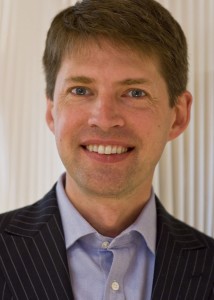

As the health care debate rages on in the public arena, chronic disease and illness are threatening to overwhelm the health care system. The cost of treating diseases like obesity, asthma, diabetes and heart disease is an enormous financial burden on the economy. Most of us recognize that architecture can have an impact on health, but what if it could actually make us healthier? What if it could help prevent disease? Reduce violence? Increase productivity? Architecture Exchange East, the Society’s annual conference and design expo, announces Tye Farrow, an internationally recognized expert in salutogenic design, as the keynote speaker.
For those not familiar, it may be easiest to understand the word salutogenic by first defining its opposite. If pathogenic is disease-causing, then salutogenic is health-causing. Salutogenic design focuses on creating, enhancing and improving physical, mental and social well-being through well designed and planned environments — environments where making healthy, sustainable choices is easy. Farrow, senior partner with the Farrow Partnership, has gained international recognition for the design of public and private sector buildings that enhance health.
The concept of salutogenic design moves beyond conventional notions of sustainability to encompass not just the building’s impact on the environment, but also its impact on users. It becomes another measure of good design. “… we’re no longer going to settle for design that is simply profitable, or efficient, or sustainable, or programmatically compliant, or any of a dozen other measures of design success,” says Ray Pentecost, FAIA, the Society’s Vice President for Professional Excellence, in an interview with Bill Mallard in Architect magazine. “We are going to look for design standards that address and respect public health.” And the idea doesn’t just apply to hospitals, but to the workplace, schools, institutions, and homes. Now that sustainable design has moved from a niche specialty to something expected — even demanded — by clients, Pentecost believes that salutogenic design is the next great wave of theory and practice.
Farrow will present his keynote address at Architecture Exchange East on Thursday, Nov. 8 at Architecture Exchange East in Richmond, Virginia. Watch www.archex.net for information and registration details. The ArchEx Keynote Address is sponsored by Scott Long Construction.
About Tye Farrow

Farrow has designed award-winning projects across Canada and around the world. Recently, the Stockholm-based World Congress on Design and Health identified him as a global leader who is making “a significant contribution to health and humanity through the medium of architecture and design.”
His groundbreaking approach to promoting wellness at the Credit Valley Hospital and Thunder Bay Regional Health Sciences Centre in Canada is viewed internationally as setting a new standard for health care design.
His work has been published in the British journals Architectural Review Magazine, AD Architectural Design and HD Hospital Development. He has been designated by The Globe and Mail’s Report on Business magazine as one of Canada’s Top 40 Under 40; recognizing Canada’s “best and brightest.” The Commission for Architecture and the Built Environment (CABE) in the United Kingdom selected Farrow’s design for Credit Valley Hospital as 2007’s Best International Design.
He holds a Bachelor of Architecture degree from the University of Toronto, and a Master of Architecture in Urban Design from Harvard University.
Follow his firm on Twitter @FarrowPartners
Visit the website http://www.farrowpartnership.com/
Read the blog http://farrowpartnership.wordpress.com/
